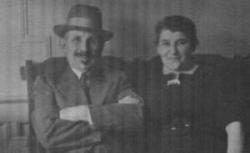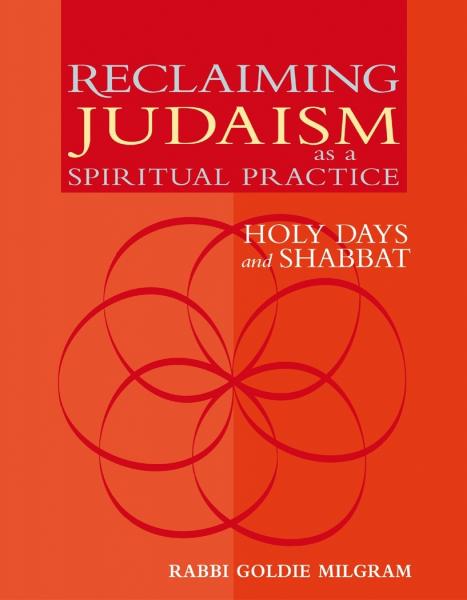
Ushpizin is a way of inviting in of the souls of ancestors and other special figures into your sukkah. Here is how ushpizin can be done:
1. Ask those present to think about who from the family or Jewish history that has gone on to the next level of existence, whom of these do you want to be in the sukkah with you? It’s nicest to say why you are inviting them...tell a story about them, or recall something they did that meant a lot to you, or everyone think of a question to ask the ancestor being invited in, for example, the Biblical Abraham and/or Sarah.
2. Then recite the Aramaic welcome: Tivu, tivu, ushpizin ee-lah-een, tivu, tivu, ushpizin kaddishin: (and announce): Come in, come in, honored and holy guests! (An MP3 sound file and songsheet for Rabbi Geelah Rayzel Raphael's "Tivu" song, done with the a capella group Miraj is attached.) The are seven traditional male and female ancestral guests to invite into your Sukkah (and tell their stories) from antiquity are:
Abraham, Isaac, Jacob, Joseph, Moses, Aaron, and David. (Some texts place Moses and Aaron before Joseph.) According to the 16th-century Kabbalist Menachem Azariah, known as the Ramah of Fano, the seven invited female figures, known in the tradition as prophetesses, are: Sarah, Miriam, Deborah, Hannah, Abigail, Hulda, and Esther. Variant traditions have Rachel, Rebecca and Leah substituted for some of the women.
3. Some pair these ancestors with the sephirot, the branches of the Tree of Life contemplative model, the Eitz Chayyim, developed by the original Kabbalists as follows: (order of Arizal)
Avraham (Abraham): Chesed
Yitzchak (Isaac): Gevurah
Yaakov (Jacob): Tiferet
Moshe (Moses): Netzach
Aharon (Aaron): Hod
Yosef (Joseph): Yesod
David (King David): Malchut
 Rabbi Geelah Rayzl Raphael has a delightful ushpizin song use the tivu tivu phrase, with lots of fun and helpful verses.
Rabbi Geelah Rayzl Raphael has a delightful ushpizin song use the tivu tivu phrase, with lots of fun and helpful verses.
Tivu:
Listen to R'Raphael and the musical group Miraj singing this song. Song appears as attached file.
P.S. There are Kabbalistic wall charts and fabric wall hangings available in many Jewish bookstores listing the ancestors for ushpizin and assigning them to different directions on the compass or to the order of the sephirot. Here's how to associate them with the directions:
4. Each of the six directional dimensions has different ancestors and qualities associated with it. You can organize the ushpizin ritual accordance with the directions and shake the lulav as you welcome the ancestors in the directions described above. Usually this process starts with Sarah and Abraham, known for their hospitality in Jewish tradition, for "keeping their flaps up" and deeply caring for the needs of guests, even washing their feet!
While researching this I was privileged to learn how to figure out which directions go with which directions from Dr. Miles Krassen, author of "Uniter of Heaven and Earth," as follows:
a. Pick up a copy of the Torah in Hebrew and/or English on CD rom, or find a good site or two on the web to do a key word search on each of the directions. (I’d make suggestions, but things change so quickly in cyberspace.) In the minds of the mystics and the sages, all occurrences of a word would offer them expanded understandings of the text or a spiritual practice.
This opens up the fascinating world of the rabbinic mind to you without requiring an awesome memory and yeshiva upbringing to begin to do so. This can search process also be done with phrases. You will begin to glimpse what is called "hermeneutics" by scholars and is referred to as "source code" by teachers of practical kabbalah. Both mean you will begin to notice the methods for deriving meaning from the texts that were used by the sages, these methods are particular, fascinating and essential to finding the most potent possibilities which have so far been developed in our ancient tradition. So far, is an important expression, who knows what creative approaches you may bring to this process!
b. To try this out, enter one of the directions into the biblical search engine you have chosen, "East" perhaps, and see which of the biblical characters has part of their story associated with this direction. Then continue with collecting verse/story findings for all of the directions.
c. Appoint those characters to be welcomed from the direction with which they are either most often associated, or the direction from when they first enter the promised land, or first enter the Torah story.
Here is one way that Rabbi Shefa Gold applies the principle of the four directions with the matriarchs:
East: Tiferet, sun, Sarah, Place of new beginnings
North: Gevurah, cold, Leah, Place of challenges
South: Chessed, warm, Rachel, Place of passion and beauty
West: Malchut, moon, Rebecca, Place of the unknown
4. Now, here are the directions in which it is customary to shake the lulav according to the Ari, Zohar and Tikuney Zohar as found in Sefer Yetzirah,
Chesed: south, lulav to the right
Gevurah: north, lulav to the left
Tiferet: east, lulav to the front
Netzach: up toward the heavens, lulav up
Hod: down toward the earth, lulav down
Yesod: west, point the lulav behind you
There are also traditions for which letters of God's name to recite in each of the directions. This can be found on page 84 of Rabbi Aryeh Kaplan's book on the Sefer Yetzirah.
Have a joyful, meaningful Sukkos / Sukkot!

Learn more about Jewish holy days
in Reclaiming Judaism as a Spiritual Practice;
Holy Days and Shabbat by
Rabbi Goldie Milgram